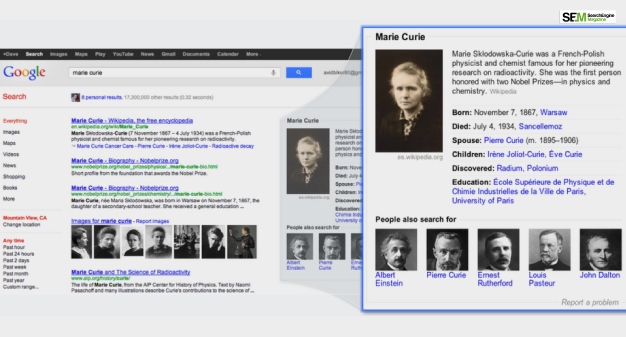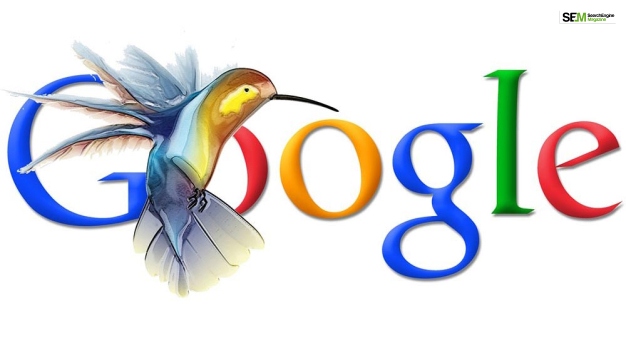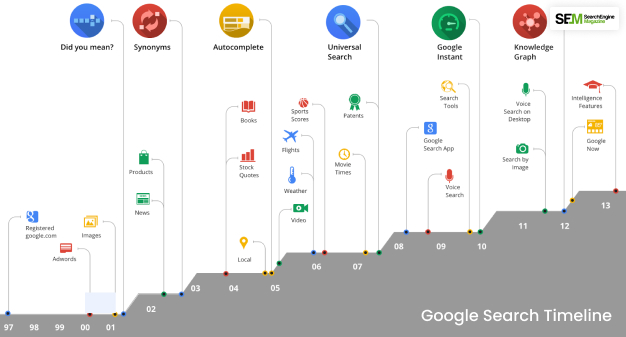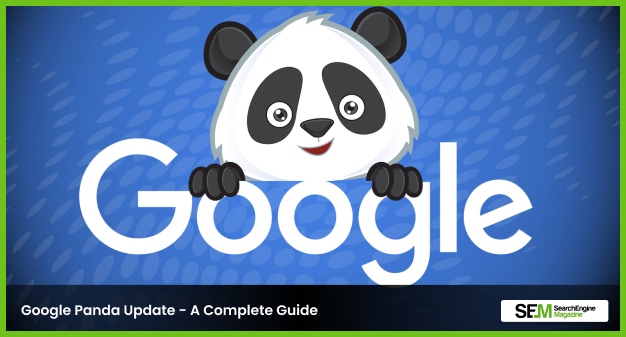How To Build An Efficient B2B Demand Generation Strategy In 2025?
Jul 07, 2025

Jul 07, 2025

Jul 07, 2025

Jul 04, 2025

Jul 03, 2025

Jul 01, 2025

Jun 30, 2025

Jun 30, 2025

Jun 30, 2025
Sorry, but nothing matched your search "". Please try again with some different keywords.


The Google Hummingbird update in the middle of 2013 changed the concept of ‘search’ forever. It’s so convenient to forget about those tough days when Google has no clue how to answer contextual queries. Before the revolutionary update, for 20 years, people depended on specific keywords for solutions.
If you don’t know what is the Google Hummingbird update and the purpose behind the same, you have to understand how life was before the birth of the Google Hummingbird update. Keep reading to find out how!
The basics of search engine optimization at the beginning of 2013 were pretty similar to what it is today. Even then, the content was considered king, people were embracing the concept of earning links instead of paying for them, and the goal was still to answer queries that mattered.
However, the world of search engine results was severely different, even a year ago before the Google Hummingbird update was announced.

One year before people had any idea as to what is google hummingbird update, search engines were pretty underdeveloped compared to what we get today. For instance, search results would show exactly whatever you would type – from long-tailed keywords or a single word to popular abbreviations.
The biggest issue with this kind of search results was that the answers would never provide any scope for in-depth research. Thus, it was evident that Google could not differentiate between two similar questions that differed slightly from each other.
For instance, if you type ‘Globe’ on Google now, you will come across search results related to Shakespeares’s Globe theatre. However, if this were 2010, Google would directly display pictures of the globe used in Geography. Thank god, this is not how search looks presently.

In the early days of the Google Hummingbird update, the algorithm did its best to answer questions depending on the available content on the internet. During this time, Google experimented with directing search results towards content created by reliable sources. The reliable sources were determined by Google’s Agent Rank Patent of 2009.
When Google combined this move with an organized data markup, a short program by the name of Google Authorship was born. The Google Authorship update and Google + went live almost together, enabling content creators to utilize an internal system linking publications with publishers.
However, by 2014 the concept of Authorship had failed. Most Google insiders and industry experts blamed a low rate of adoption, small changes in the behavior of end-users on search engine result pages, and Google’s constant habit of experimenting with new updates as primary reasons for the failure of Authorship.
You may like to read: What Is Google Algorithm Update? | A Brief Guide Of 2022

The revolutionary update came to be known as the Hummingbird Update mostly because the update came with a promise: to improve Google search by making it faster and more precise. When we say fast, you can understand what it means but what about being precise?
Google search for the first time became precise, that is, more accurate as well as exact – Google search with the help of Hummingbird update was becoming more precise as to what a query means instead of displaying all kinds of content related to the keyword.
The then CEO of Google, Matt Cutts even spoke at length about the update in an interview in 2013,
“Hummingbird is a rewrite of the core search algorithm. Just to do a better job of matching the user's queries with documents, especially for natural language queries, you know the queries get longer, they have more words in them, and sometimes those words matter, and sometimes they don’t.”
The whole concept of keyword research after the Google Hummingbird Update became what every content marketer wished for! Keep re+ading to find out more about this game-changing update!
After Google’s Caffeine update of 2010, the next revolutionary announcement was the Google Hummingbird update in September 2013. This was revolutionary in creating a powerful impact on how users reacted and interacted with SERPs. A solid 90% of Google searches were influenced across the world after Hummingbird was introduced.

If you have been looking for google hummingbird update goals then you have come to the right place! Thus, keep scrolling to find out what was the purpose of the Google Hummingbird algorithm update!
Search results were now taking the help of ‘natural language processing’ for computing niche solutions for questions for both long-tailed and head levels. For the first time, users were able to look for topics and related topics confidently on Google without relying on creating questions with the help of Google-fu.
Old users of search engines will understand how challenging it used to be before when finding something on the Internet would require users to know something about the topic. The Google Hummingbird update wanted to fix this by prioritizing both synonyms and topics related to the themes.
Thus, Hummingbird helped Google become a little human when it enabled users to accurately find what they were looking for and let them know what they didn’t know.
Read more: 4 Updates To Google’s Algorithm That Influenced The SEO Industry
The best part about the Google Hummingbird update was how it combined a user’s needs with both intent and context for getting the best results. So naturally, this combination proved to be an incredibly successful strategy and ended up improving local searches considerably.
For instance, if you were trying to find a great Italian restaurant in the United States before, you would have to be so careful while typing out your query, otherwise, you might just be stuck with recommendations in Europe or some other continent. So, of course, on the surface, the different results will also be great for Italian food, but that is not what you were looking for.
Thus, it was the brilliant combination of ‘conversational language processing’ and comprehending human intent based on location-related information that led to the beginnings of something as precise as voice search.
The Hummingbird of course changed a lot of things, including the whole concept of local search. For the first time, local searches became more precise than ever when Google brought together context and intent for improving search results considerably. Simply put, local searches became more precise than ever before.
The Hummingbird update combined context and intent for providing better search results to queries posed by users. The update was responsible for making google search relatively more precise as well as faster.
Yes, since 2013, Google has been using the Hummingbird update, which has brought about a revolution in improving search results considerably., by simply making the same more precise and fast.
Google introduced a broad core algorithm called The Page Experience in June 2021. The Page Experience update is supposed to improve the quality of user experience by focussing on pages with premium quality performance.
After the Caffeine Search Update of 2010, the first major Google update was the Hummingbird update. This upgrade was responsible for upgrading the search architecture of the same, making Google search more precise than ever. Instead of just sorting through data, this upgrade uses indexing for ranking articles.
The Hummingbird Update was put into effect in the month of August 2013 and Google made an announcement about the same in the month of September. Described as one of the biggest algorithm changes since 2001, the Hummingbird Update has been described by several Googlers as a complete rewrite of the main core algorithm.
The Google Hummingbird update is considered by many as the move that changed the whole search engine game forever. But the question is, did it? All of it relies upon how users see it and how did it benefit users and the organic search world.
While the update’s forerunners, Penguin and Panda, caused plenty of chaos on search engine result pages, Hummingbird failed to cause any similar noise. Moreover, it also was not the first time an information-related method was being put to use for providing reliable solutions to questions.
However, all this does not mean Hummingbird did not make any significant contribution to how search results work today. The Caffeine update, Knowledge Graph, and even Authorship had all failed.
Hummingbird was standing on the shoulders of three major duds and still managed to be this popular. After all, Google just did not change the air filter of the search engine with Hummingbird, but ended up changing the complete search engine block!
Read Also:
Barsha is a seasoned digital marketing writer with a focus on SEO, content marketing, and conversion-driven copy. With 7 years of experience in crafting high-performing content for startups, agencies, and established brands, Barsha brings strategic insight and storytelling together to drive online growth. When not writing, Barsha spends time obsessing over conspiracy theories, the latest Google algorithm changes, and content trends.
View all Posts
How To Build An Efficient B2B Demand Generati...
Jul 07, 2025
Lovo AI: Is This AI-Powered Voiced Generation...
Jul 07, 2025
How AI-Powered CRM Is Contributing To Smarter...
Jul 04, 2025
The Role of Pipedrive CRM in Streamlining Dat...
Jul 03, 2025
What Happens to Digital Assets During Probate...
Jul 01, 2025

